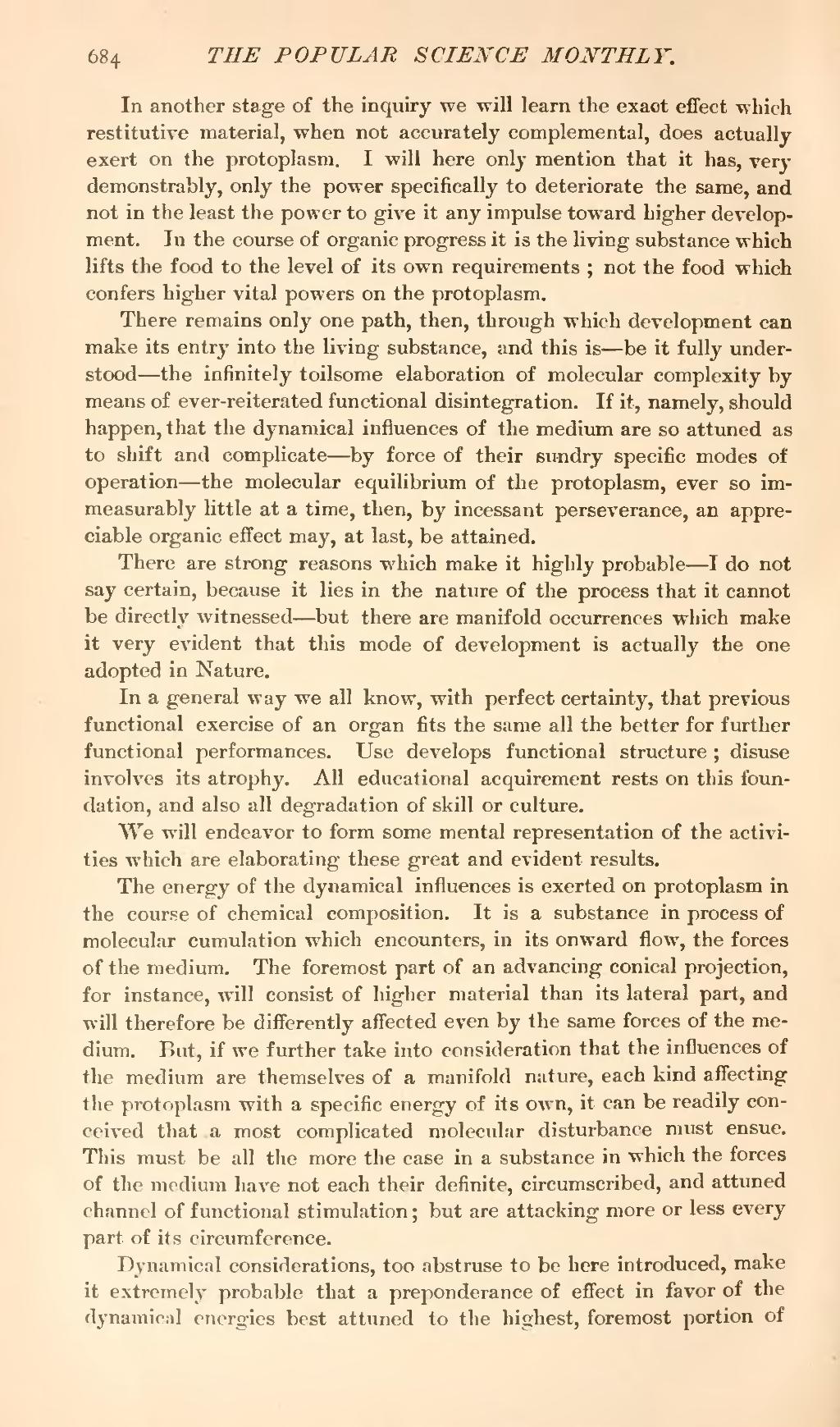In another stage of the inquiry we will learn the exact effect which restitutive material, when not accurately complemental, does actually exert on the protoplasm. I will here only mention that it has, very demonstrably, only the power specifically to deteriorate the same, and not in the least the power to give it any impulse toward higher development. In the course of organic progress it is the living substance which lifts the food to the level of its own requirements; not the food which confers higher vital powers on the protoplasm.
There remains only one path, then, through which development can make its entry into the living substance, and this is—be it fully understood—the infinitely toilsome elaboration of molecular complexity by means of ever-reiterated functional disintegration. If it, namely, should happen, that the dynamical influences of the medium are so attuned as to shift and complicate—by force of their sundry specific modes of operation—the molecular equilibrium of the protoplasm, ever so immeasurably little at a time, then, by incessant perseverance, an appreciable organic effect may, at last, be attained.
There are strong reasons which make it highly probable—I do not say certain, because it lies in the nature of the process that it cannot be directly witnessed—but there are manifold occurrences which make it very evident that this mode of development is actually the one adopted in Nature.
In a general way we all know, with perfect certainty, that previous functional exercise of an organ fits the same all the better for further functional performances. Use develops functional structure; disuse involves its atrophy. All educational acquirement rests on this foundation, and also all degradation of skill or culture.
We will endeavor to form some mental representation of the activities which are elaborating these great and evident results.
The energy of the dynamical influences is exerted on protoplasm in the course of chemical composition. It is a substance in process of molecular cumulation which encounters, in its onward flow, the forces of the medium. The foremost part of an advancing conical projection, for instance, will consist of higher material than its lateral part, and will therefore be differently affected even by the same forces of the medium. But, if we further take into consideration that the influences of the medium are themselves of a manifold nature, each kind affecting the protoplasm with a specific energy of its own, it can be readily conceived that a most complicated molecular disturbance must ensue. This must be all the more the case in a substance in which the forces of the medium have not each their definite, circumscribed, and attuned channel of functional stimulation; but are attacking more or less every part of its circumference.
Dynamical considerations, too abstruse to be here introduced, make it extremely probable that a preponderance of effect in favor of the dynamical energies best attuned to the highest, foremost portion of
